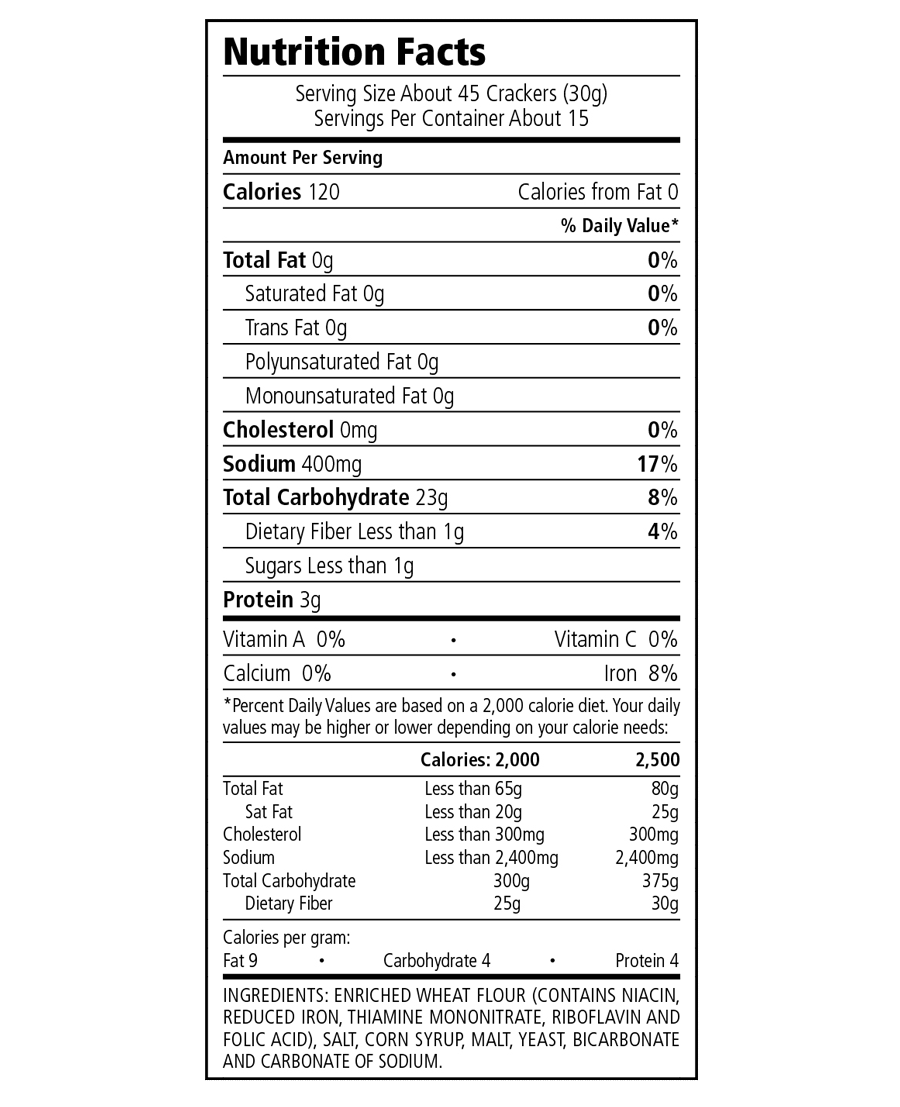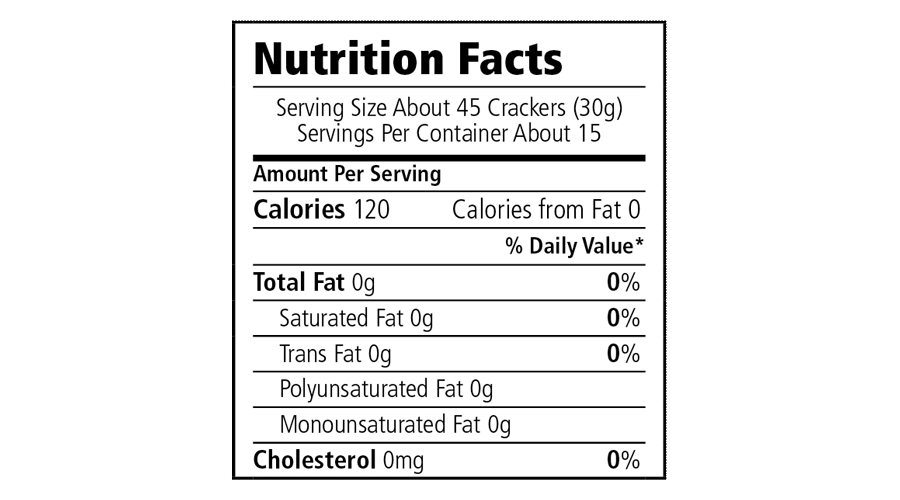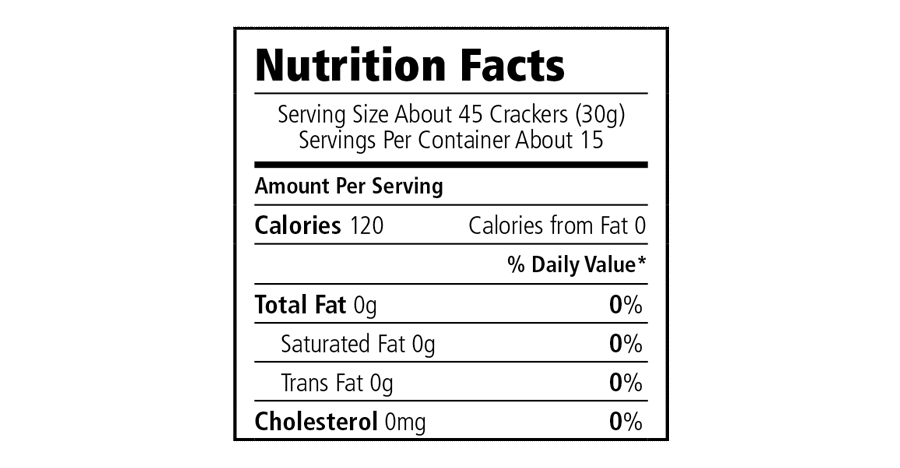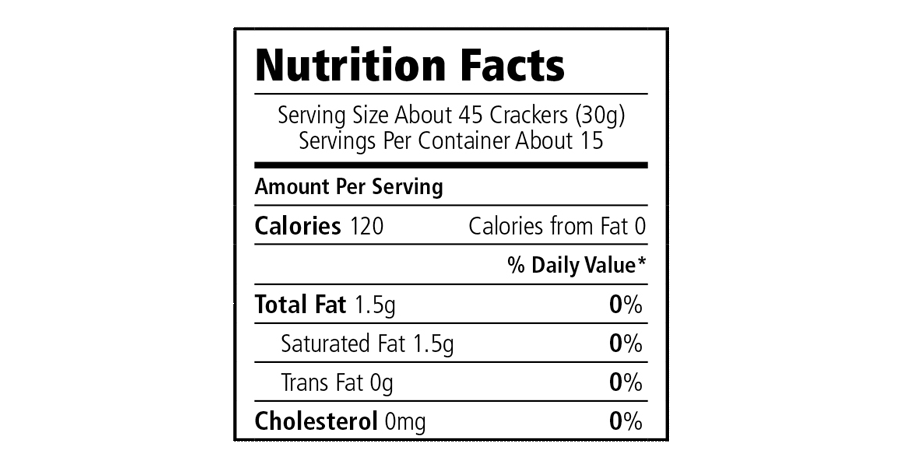8
Grocery Shopping Made Easy
Someone once said they wished there was an app that allowed them to take a picture of the food they were thinking of buying at the grocery store that would then tell them whether or not they should eat it. Well, there is not an app like that (yet!), but there is something almost as easy. It is called the Nutrition Facts box. It tells you the serving size, calories, fat and sugar content, and sundry other facts. How do you pick the right foods at the grocery store? How do you know which ones you should never place in your cart? With these quick keys to the nutrition facts, you’ll be ready to decide.
The initial step in defeating your eating addictions and habits is to not bring certain foods into your home. Winning the battle begins in the grocery store aisle. How you shop at the grocery store is one of the most important steps you can take to protect your arteries. It won’t be long before you begin noticing that the foods in your cart are different from the ones you used to have in it. The day will come when you look at another person’s cart and see all the cookies, hot dogs, and ice cream, and the absence of vegetables and fruits, and catch yourself wondering why they don’t understand what they are doing to their bodies.
The Nutrition Facts box appears on every packaged food in America. It’s on all of them: potato chips, crackers, packaged meats, canned soups, ice cream—everything. You don’t have to look at all the numbers; just look at three of them. Once you have developed the habit of looking in the right spot for the right information, it will take less than ten seconds to decide whether to put the food in your cart or back on the shelf.

Whether you look at a box of club crackers or a bag of potato chips you will notice on the side of each container a label that shows in large print: Nutrition Facts.
This is what it looks like.
The diagram shows serving size, calories, different fats, sodium, total carbohydrates, dietary fiber, sugars, and protein.
Those are all interesting facts, but you can concentrate on one little section of the box. Train your eyes to go directly to the total fat and cholesterol segment of the box:

You want to concentrate on the “bad threes.” First, check the initial two items that are always listed directly under total fat: saturated fat and trans fat. In addition to those two, look for the dietary cholesterol number, which is always found just below the saturated fat and trans fat listing.
Zero, zero, zero is your target.
Saturated fat, trans fat, and dietary cholesterol are the most significant elements in foods that result in the greatest elevation of LDL Cholesterol in your blood. The rule is simple—look to see if there is any number other than zero beside each of these “bad threes,” and if so, put the item back on the shelf and find a similar food that doesn’t contain any of the “bad threes.” Train your eyes to look under total fat to find saturated fat and trans fat and just below that, cholesterol. Those “bad threes” are the ones to avoid like the plague.
For practice, let’s go over some of the numbers you might see beside these items. If you examine two boxes of club crackers, one regular and one labeled “reduced fat,” you will see something like this on the reduced fat box:

Look under the Nutrition Facts section and see that saturated fat is zero, trans fat is zero, and cholesterol is zero. Zero, zero, zero; that’s what you want. If you pick up the second box of club crackers, which looks identical to the first, except the “reduced fat” label is missing, you will see:

This box of crackers reads saturated fat 1.5g, trans fat 0g, and cholesterol 0mg. It takes less than ten seconds to remember that the one fat we as Americans eat the most of, the one that raises our LDL Cholesterol, is saturated fat. It’s found in so many of our foods that you can’t believe it.
If you develop that simple ten-second shopping step of knowing where to look on the Nutrition Facts box, you are off to the races. You will find food choices that are similar to what you want but have lower saturated fat content; all you need to do is look. Plus, the good part is, if you were to take crackers out of both boxes and mix them, it would be difficult to tell a difference in taste—especially if you are eating the cracker with a bowl of soup or with something on the cracker. If you weren’t watching for the saturated fat, trans fat, and cholesterol content, you could pick up the nonreduced fat crackers without thinking anything about it and eat the lethal enemy. And if you multiply that one example by all the items you buy without observing the “bad threes,” you will end up bringing into your home a whole bag full of enemies. It doesn’t seem all that significant, but it is.
I don’t want to make it sound too simple, because you will find many, many foods with zero trans fat and zero cholesterol, but the saturated fat section is where you will have the most difficult time finding a zero. You will not find triple zeros on many items, but it will surprise you how often you will find them—if you look. Let’s look more at each of the “bad threes.”
Trans fat. In reality, you will find a zero beside the trans fat almost every time. Trans fat is so bad that the government has recently moved to ban it. However, occasionally, you will find some trans fat listed, and the rule for trans fat is absolute zero. Trans fat? Put it back. Do not falter from that one. Remember that trans fat is the one used as a preservative and is (or was) found in those foods at the corner market where the goods sit on a shelf for a long period of time—cookies, donuts, pastries, and the like.
Cholesterol. Most food manufacturers have come to realize the danger of using cholesterol in their baking or cooking process, and the majority of times, cholesterol will also be zero. However, it is still not unusual to find cholesterol listed in cookies, candies, and pastries and such. Although dietary cholesterol is not as lethal as trans fat, you still need to make cholesterol an absolute zero. If there is a number other than zero beside cholesterol, put the item back. Ninety-nine percent of the time, if you look, you will be able to find a similar food with trans fat and cholesterol being zero.
Saturated fat. Now we come to the reality of saturated fat. A zero is what you aim for, but you will not be able to find everything you want within that limit. You may have to bump your desired number from zero up to 0.5 grams. The goal is still zero, but reality makes us allow a 0.5 gram number. Most candy bars and similar foods will range from 2 to 7 grams—so they are out. Develop a different desire for such foods. Aim for a saturated fat of zero, but for practicality, a half a gram is permissible. Develop your habit. If over 0.5 grams for saturated fat, put the item back. And that’s not 5; it’s 0.5.
Take a minute to learn these numbers because you want to develop the habit of looking for them each time you pick up a packaged item of food, whether at the grocery store or in the fast-food market. Let’s say you want potato chips or something similar to go with a sandwich. You look in the grocery store and find a bag that says “reduced fat.” Look at the Nutrition Facts box and see zero, zero, zero for saturated fat, trans fat, and cholesterol.
However, your children or grandchildren want those reddish-coated Doritos chips so they can get that red on their fingers and lick it off. You look at regular Doritos and see saturated fat: 1.5g with zero trans fat and zero cholesterol. Next to that group of bags you see another group of bags of Doritos that look the same on the picture, but on the bag it says “baked.” Looking at the Nutrition Facts box, you find zero beside the trans fat and cholesterol, and under saturated fat you see 0.5g. The regular Doritos have three times the amount of saturated fat as the baked ones. You simply pick up the baked product and let your grandchildren begin developing the habit of eating their favorite chips—baked. That’s what I’m talking about. Begin looking at the Nutrition Facts box and choose the foods you actually want to take home.
You will see figures that are completely out of reach in some foods you routinely had in your kitchen pantry at one time, such as packaged foods like donuts and cakes, with saturated fat at 9 to 12 grams, perhaps a couple of grams of trans fat, and a lot of cholesterol. Those are the foods you won’t touch with a ten-foot pole anymore, much less take them home with you.
In the weight-loss part of the plan, you won’t be eating snacks between meals. But once you reach your ideal weight, the snack basics you will buy at the store will consist of nuts and fruits. That’s it. So start your new habits by buying some nuts and bananas, grapes, oranges, blueberries, cherries, strawberries, or any other fruit you like. After you’re at your ideal weight and want a snack, reach for a fruit, some nuts, or a combination of the two. Nuts contain saturated fat, but they contain a great deal more of the good fats than the bad (and that’s good).